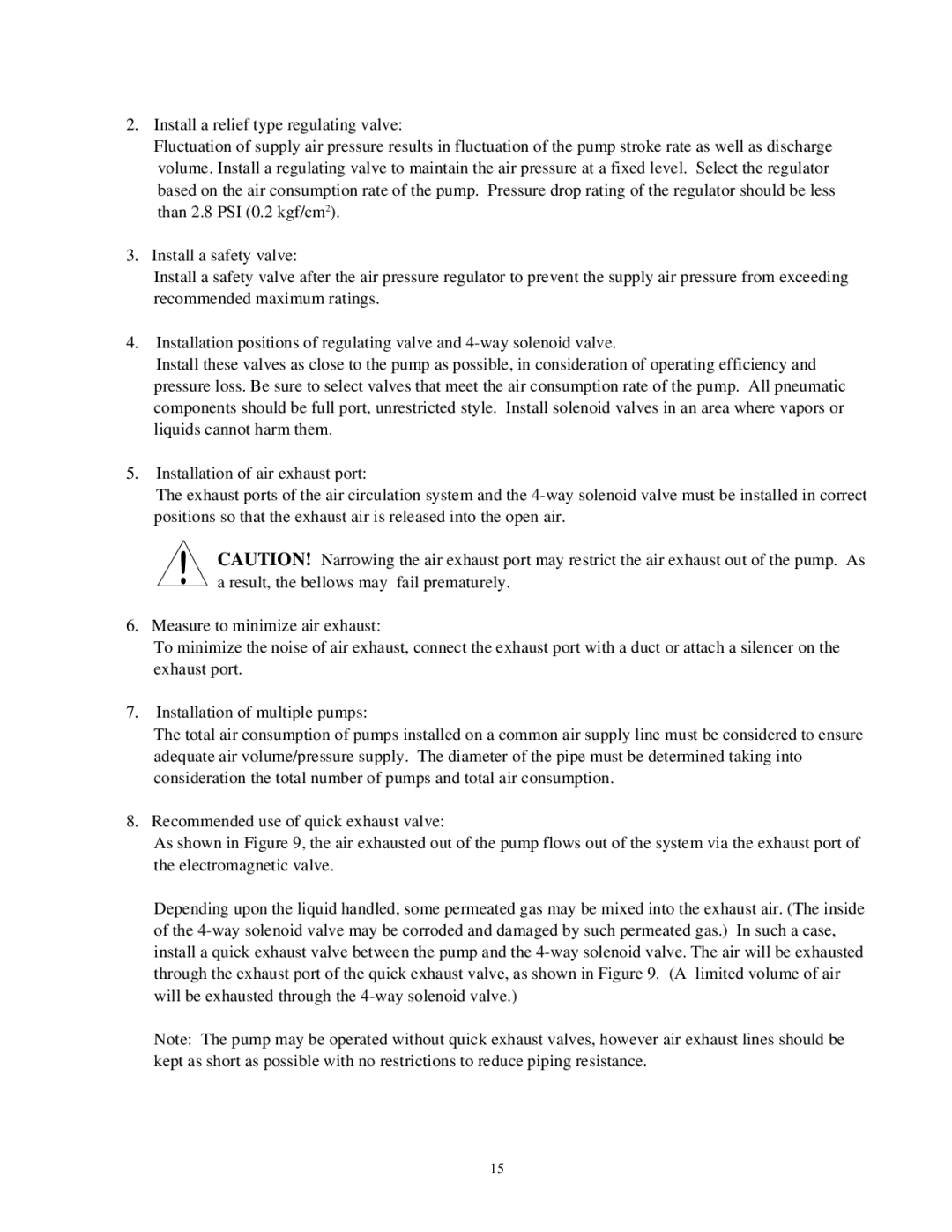2.Install a relief type regulating valve:
Fluctuation of supply air pressure results in fluctuation of the pump stroke rate as well as discharge volume. Install a regulating valve to maintain the air pressure at a fixed level. Select the regulator based on the air consumption rate of the pump. Pressure drop rating of the regulator should be less than 2.8 PSI (0.2 kgf/cm2).
3.Install a safety valve:
Install a safety valve after the air pressure regulator to prevent the supply air pressure from exceeding recommended maximum ratings.
4.Installation positions of regulating valve and
Install these valves as close to the pump as possible, in consideration of operating efficiency and pressure loss. Be sure to select valves that meet the air consumption rate of the pump. All pneumatic components should be full port, unrestricted style. Install solenoid valves in an area where vapors or liquids cannot harm them.
5.Installation of air exhaust port:
The exhaust ports of the air circulation system and the
CAUTION! Narrowing the air exhaust port may restrict the air exhaust out of the pump. As a result, the bellows may fail prematurely.
6. Measure to minimize air exhaust:
To minimize the noise of air exhaust, connect the exhaust port with a duct or attach a silencer on the exhaust port.
7.Installation of multiple pumps:
The total air consumption of pumps installed on a common air supply line must be considered to ensure adequate air volume/pressure supply. The diameter of the pipe must be determined taking into consideration the total number of pumps and total air consumption.
8. Recommended use of quick exhaust valve:
As shown in Figure 9, the air exhausted out of the pump flows out of the system via the exhaust port of the electromagnetic valve.
Depending upon the liquid handled, some permeated gas may be mixed into the exhaust air. (The inside of the
Note: The pump may be operated without quick exhaust valves, however air exhaust lines should be kept as short as possible with no restrictions to reduce piping resistance.
15
